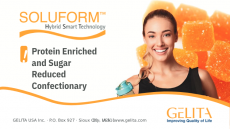Editor's Spotlight
The glucose revolution: are you ready?

Until recently, blood sugar monitoring has been relegated to the area of pre-diabetes and diabetes. But elite athletes, and now the wider masses, are starting to tap into this biomarker, meaning a new generation of highly astute consumers, argues Wouter Claerhout, chief marketing officer at Phynova.
“Our blood glucose level is highly personalised and responds quickly to what we eat and that is a very cool opportunity across the board - for consumers and the industry," he tells NutraIngredients.
“Often the biggest hurdle we have in the supplements industry is making consumers aware of the health benefits of our products and this was no different for those in the blood sugar market, up until around a year ago.”
What happened a year ago? A number of things. Firstly, Claerhout says French “Glucose Goddess” Jessie Inchauspe created a hugely influential Instagram page and wrote an internationally bestselling book called ‘The Glucose Revolution’, in which she provides a practical guide to the science behind managing glucose.
“She explains the science in layman’s terms and with over 1 million followers on Instagram, she is helping tackle our biggest challenge of making the consumer aware of the importance of glucose control.”
Also in the last year, the mass market has gained access to user-friendly sensor-driven continuous glucose monitors, replacing traditional glucose monitors which require finger pricks.
“These have really revolutionised disease management as it has removed the stigma attached to blood sugar monitoring, and it has made it easy, normal, even trendy, to wear a CGM,” Claerhout asserts.
“As a result we are now starting to see this technology in other areas of society. All pro-cyclists are now wearing these during training in order to advance their nutrition. They tell them when they need to refuel, meaning they can learn what foods to take in at what points during a ride. They are so effective that the UCI has forbidden their use during race competition.”
As a result of this technology, we are seeing the proliferation of layered CGM tech services offered to the mass market, with Supersapiens being one of the frontrunners in this space.
“This startup has taken Abbott’s CGM and purposefully made it as visible as possible, with a big black patch.
“People are in the gym saying ‘look at me, I’m a biohacker, I’m in the know as to what my body is doing’.”
Companies like ‘MyLevels’ are also utilising this tool, promising consumers they will never have to diet again, Claerhout adds.
“This company provides personalised insights into what foods you can eat and what you should stay away from.”
This is all very impressive but these services can cost upwards of $300 a month, meaning they’re only currently catering to a select group of consumers.
However, that is set to change.
The mass market shift
“Apple and Samsung are in an arms race to bring that technology into wearable devices," says Claerhout.
“The blood glucose biomarker is too good not to put in smart watches and the first integration into these is likely to happen this year. When that happens, a lot more people will have the ability to monitor their blood glucose day-to-day.
"When this happens, people will be able to see immediately what food is good for their health and what is not. When we see it with our own eyes, I believe our psychological relationship with food will change.”
The industry expert says those in the industry need to be ready for this new era of technology.
"If products make promises on blood sugar control and they don't deliver, they will be caught out so make sure if you are producing these ingredients they deliver on their promises."
Reducose
Phynova sees this as a huge opportunity for its patented mulberry leaf extract named ‘Reducose’, which is said to ‘turn fast sugars and carbs into slow ones’, therefore helping to control blood glucose highs and lows.
Claerhout says: “Not only can the consumer feel this ingredient work through reduced sugar highs and lows, less cravings, and sustained energy, but now they will be able to see it working too.”
Most carbohydrates in our diet (starch and sugar) are too large to be absorbed and we have to break them down to individual glucose molecules for absorption, he explains. Reducose works by blocking these enzymes, allowing much of the food subsequently eaten to pass through the top half of the digestive system without digestion. This reduces the amount of food converted into blood glucose, reducing insulin response (the hormone which pushes glucose calories into our storage tissues and may lead to weight gain).
As an additional benefit, Claerhout says Phynova has conducted a study, as yet unpublished, concluding that when the undigested food makes its way through the lower half of the digestive system, it becomes food for the good bacteria in the gut microbiome, which will ferments the carbohydrates into short-chain fatty acids, therefore providing gut health benefits and causing the consumer to feel fuller for longer.
The list of published and unpublished studies into this ingredient can be found via the firm's website.









